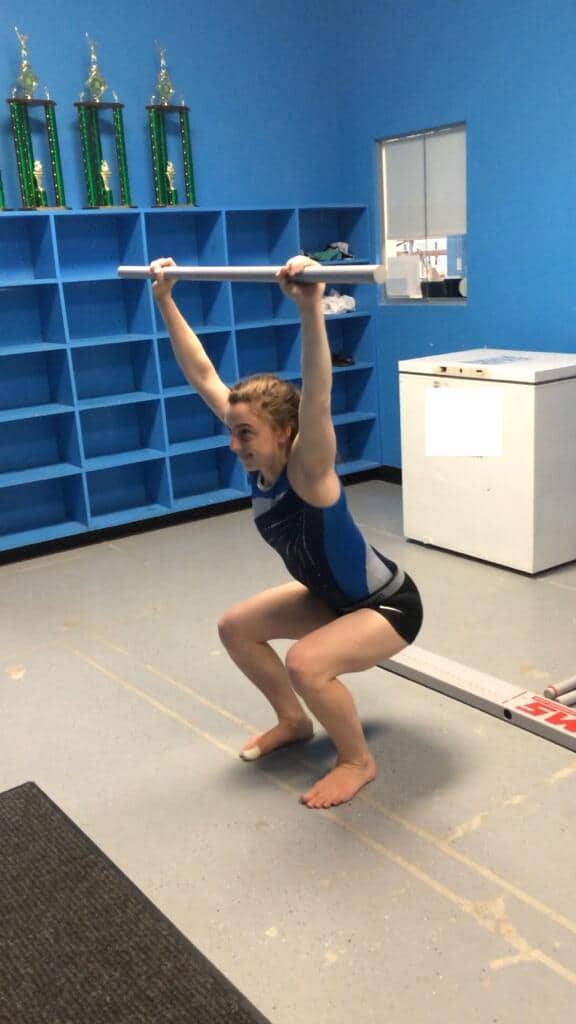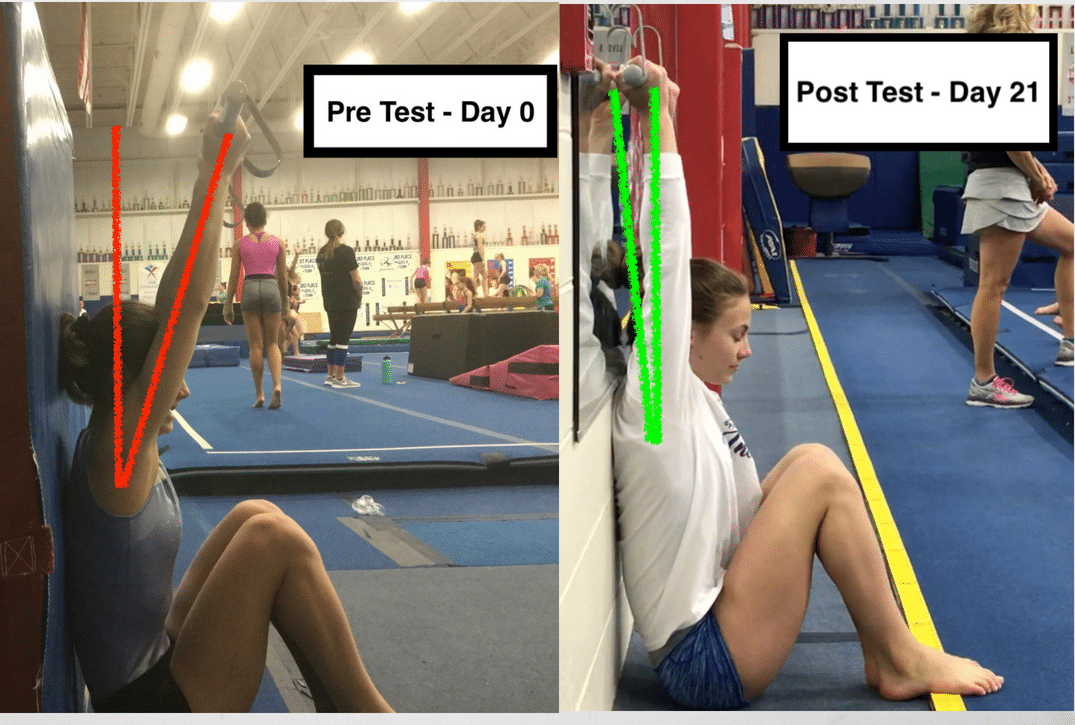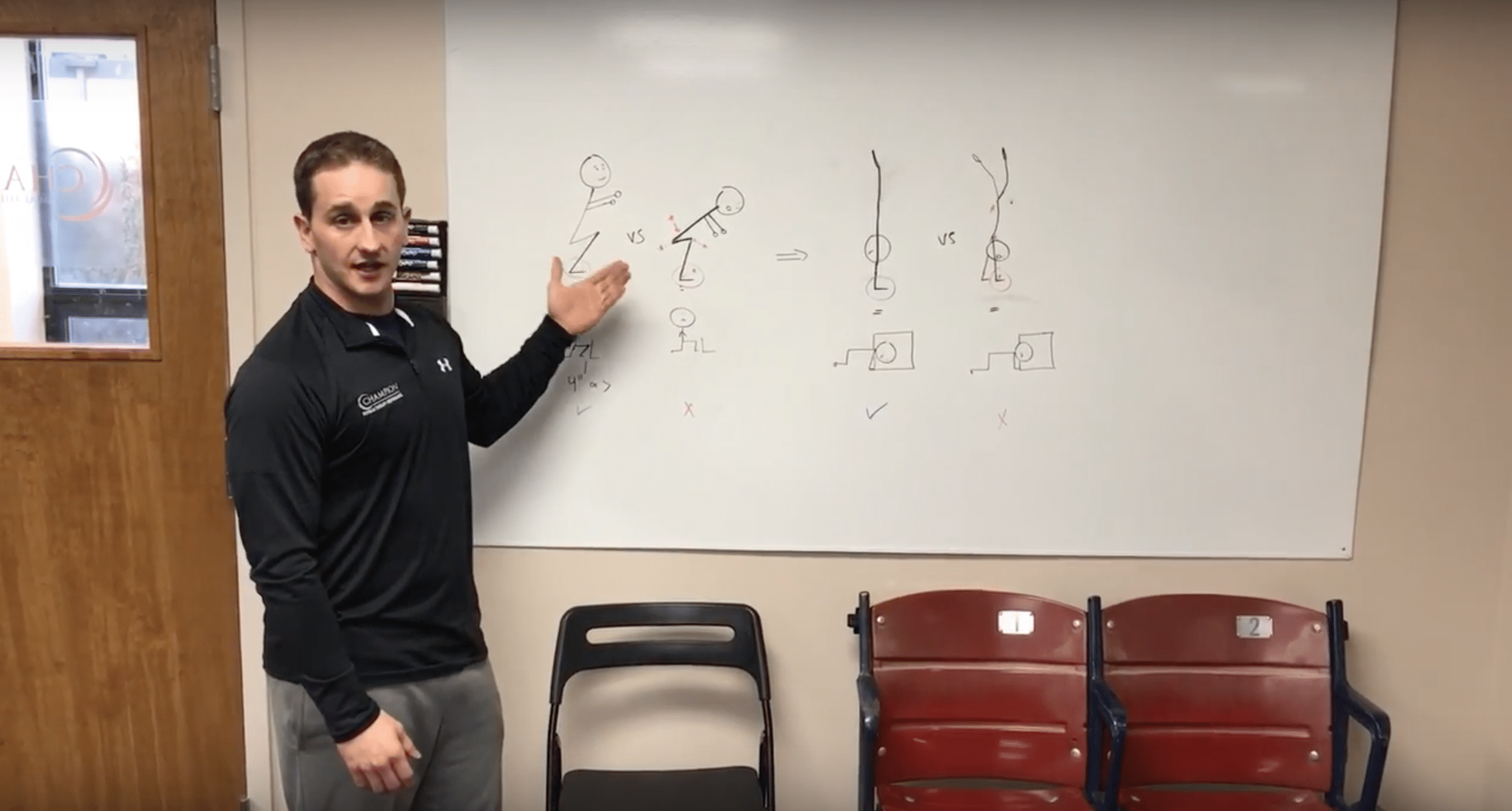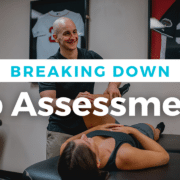Thoughts on Why To Use The Functional Movement Screen (FMS) In Gymnastics
A few months back, an article came out in Technique magazine about the Functional Movement Screen (FMS) and it’s concepts. I think it was a great introduction, but I have been meaning to pitch in my two cents on why I feel using the FMS is important for gymnastics. In short, the FMS is a screening tool designed to quickly look at a variety of movement patterns. It uses 7 movement patterns to pick up on the presence of pain, asymmetries between left and right sides of the body, or patterns that are very hard for the person to do. I don’t want to dive into the “how to” and methodology of the FMS, but anyone interested can find more here. I certainly haven’t become a FMS ninja, and will admit I definitely spend way more time in the SFMA (medical counter part to the FMS) as a clinician. But, I use it the FMS with both the gymnasts that I coach on our team yearly, but also gymnastics patients I treat as one piece to determine return to sport readiness.
Here is kind of a brain spill for some things that have gone through my head in relation to why I think the FMS can give some useful information for gymnasts. Many of these ideas were sparked or applied from other fantastic healthcare and fitness professionals, who I included in the references below.
Thoughts on The Patterns
1. Overhead Deep Squat
- Gymnastics is a landing and squatting sport. I feel strongly that teaching and regularly screening for proper squatting/landing mechanics is one of the biggest things to combat a variety of different injuries in gymnastics. Teaching proper landing mechanics in gymnastics is a rabbit hole of discussion for another time. But, I think everyone can appreciate this screen would give insight into that aspect of training.
- If you think about it, during the overhead squat the gymnast has to statically control both arms and the upper body overhead in the presence of a dynamically changing condition of the lower torso and legs. That’s a mouth full for the gymnast keeping the arms in control while the body and legs move. In my mind that looks a lot like what might happen during uneven bar skills like giants, free hips, and more. It also could be a puzzle piece to controlling handstand based skills, and overhead conditions like tumbling/yurchenkos. All have different patterns and positions that are context specific as the body is fixed in this test vs not fixed during skill work. But, I can get behind the idea that this test puts a unique demand on the shoulders that may be applicable to gymnastics.
- The deep squat screens a pattern, not an isolated muscle or joint. Many gymnasts I have screened struggle with this test quite a bit, and its easy to falsely pin it to tight calves or tight lats. Although those are two things I find commonly, there are many possible reasons why it is limited, and you have to go further into breaking down the system and finding out whats the driver. It could be restricted ankle mobility and that’s common in gymnastics, but it could be a reflexive anterior core control issue which is equally as common. There are tons of other things that it can be, and you can’t assume. It goes along with their history, previous injuries, comparison to other patterns, a test retest model for change, and more.
2. Hurdle Step
- Many people talk about how the hurdle step (along with other tests) can look at reciprocal motion of the legs, which also happens a lot in gymnastics. Running for tumbling and vaulting require rapid force development in a short amount of distance for skills (vaulting, 3 steps before big tumbling passes). It’s good to know the gymnast doesn’t have a huge problem with the basic motions or have a side to side asymmetry in this lower body motion before we start fancy running drills.
- A hurdle is a fundamental basic for both men’s and women’s gymnastics. From a very young age the gymnast uses their dominant leg for all of their hurdling, and also some women’s beam series like back handsprings. I think there’s value in making sure that an asymmetry doesn’t pop up to the point of a 1/3 or 2/3 hurdle possibly leading to a movement issue elsewhere.
- The hurdle step pattern also gives one opportunity to see how the gymnasts leg can perform in a single leg stance format. Again, you can’t blame one thing for it, but there are plenty of times for both men and women single leg stance with hip extension with superimposed balance is needed while the rest of the body is moving. Beam, floor non acro elements, running again, and more.
3. In Line Lunge
- Any women’s gymnastics coach should be in love with this test. Hello baseline balance beam screen.
- It’s super important to look at the connection of hip, knee, and ankle mechanics during triple flexion and it’s integrations with the trunk for skills. They go to this pattern a lot and many times the lack of control can create lots of issues both injury and performance wise.
- You’d be amazed to see how many of my gymnasts do poorly on this test because they defaulted to lower back extension with their lunging and couldn’t maintain dowel contact along their spine (like above). I think that speaks a lot to a gymnast who goes to lumbar motion as their main stabilization pattern. This is concerning for me as a medical providr and coach, in relation to a lack of active core control being compensated for by loading the static stabilizers of the spine (pars and ligaments primarily) to absorb huge forces during skills. Although it’s hard to say there is a direct correlation, this scenario may be a hint at spine overload, possible injury, and non optimal core performance.
- I’m definitely interested to see what a gymnast’s frontal plane function is for this type of motion in all planes, as single leg jumping/landing and asymmetrical jumping/landings happens all the time in gymnastics.
4. Shoulder Mobility
- Here’s another one I’m a big fan of for gymnasts, especially in looking at their default strategy to use their upper extremity quadrants both overhead and reciprocally. I saw a surprising amount of 2/3 asymmetries in many of my gymnasts that needed correcting. I think one reason for this is for the gymnast having a dominant arm with pirouettes on bars, tumbling, round off entries on floor and vault, and other skills. I also think true soft tissue extensibiltiy problems are very common, despite gymnast “looking flexible”. Many athletes I work with have excessive amounts of capsular hyperlaxity, and still have true limited overhead motion when controlling spinal compensations. This is concerning for micro instability and other issues at the shoulder an hip. A quick shoulder mobility screen may catch something very important here.
- How the gymnast uses their thoracic spine matters a lot. If they have an issue from this related to mobility, control, or pattern driven, it’s important. It may mean they struggle to use their thoracic spine during skill work and may overload their lumbar spine. This is a big issue in gymnasts and this is just one of many ways to check it out in the FMS.
- That 2/3 or 1/3 shoulder asymmetry is a big radar flag for me. Think about whats going on in the gymnasts system if they are bilaterally loading hundreds of high force handstands, tap swings, giants, high force tumbling, and vaults on an asymmetry? Or if a male gymnast is loading it with bilateral parallel bar swings, hundreds of pommel skills, or jams on high bar? The list can go on but I think there’s something to be said for picking up on and correcting these asymmetries early.
- Shoulder Clearing Test – Many gymnasts are sneaky, try to be tough, or simply may not realize their shoulder pain isn’t just a normal part of training. Shoulders literally serve as a second pair of weight-bearing hips for gymnasts. For that reason, they take a lot of mileage and we need to be regularly checking in on them for pain. I think shoulders can get beat up in gymnasts on both sides of the spectrum. I think some get pain because they have huge localized imbalances and altered joint mechanics. I think others have too much motion everywhere they get instability and beat up their shoulders. I think some just have an issue putting all the pieces together for a pattern. For whatever reason, if they test positive for pain you better find someone to help get to the bottom of it before it sneaks back up to bite you on you down the road. The shoulder clearing is the middle picture below.
5. Active Straight Leg Raise
- Step ins for hiccups on bars, toe ons/toe circles, some release moves, beam series, and other skills are kind of hardcore active straight leg raises. There are plenty of other more typical active straight leg situations in gymnastics too related like the obvious leaping and split leaping for women, and I think scissor work for mens pommel horse also can go into this category to a degree. For all these reasons and more, this test has huge carry over to gymnastics.
- Every gymnastics coach and gymnast in the world wants to have fantastic toe touches, pike positions, and perfect over splits on both legs. On the surface this may seem like a “how far can I get my leg over my head test”, but it’s much more. How the gymnast gets their leg there is really the focus. As I’ve said before, there are many more things to splits and pikes than your hamstring and hip flexibility. Knowing of mechanics of an active straight leg raise outside of how high can you get your leg and if soft tissue is tight is big. Like for example, can the gymnast reflexively fire their core and maintain good spine/down leg position in hip extension when they raise their leg for the pattern? To me that’s much more important.
- I wonder if coaches and gymnasts would be surprised to hear that a quick active straight leg correction may get them that equal split on both sides they’ve been dying for.
- I think there’s huge value in making sure these are symmetrical for a gymnasts. Snapping into good single pikes or double pikes for floor passes/parallel bar dismounts might be limited by an asymmetry in this area.
6. Trunk Stability Push Up
- First off, the trunk stability push up isn’t a measure of arm strength. It purposefully changes the push up parameters, and then allows for a look into how well the gymnast can automatically create spine stability centrally before they use their extremities. Pretty important in my eyes. In the milliseconds you have to catch the low bar and nail a perfect overshoot handstand, I think it’s more about turning the right things on, at the right time, and in good coordination rather than how many hollow rocks you did in the last month of conditioning. It’s also kind of funny to see the faces they make when they realize what the test is all about.
- Press Up Clearing Test – I can’t emphasize enough the importance of regularly screening a gymnast for lower back pain. I wrote a post about 5 screening tests I like to use on a gymnast to impose a variety of different demands on the back. If a gymnast has pain with a simple prone press up test, that’s concerning. It could be a quick fix but it could be the start of something serious. Remember they load that motion hundreds of times per day under very high force and speed for beam, tumbling, yurchenkos, and tons of drills. Lower back pain and fractures are an epidemic in gymnastics. Along with pain or no pain although not specific to this test in the FMS, I think the quality and presence of hinge points into extension are very important as well. Although I don’t know if we can prevent them all, I think early screening like this and other pre-hab/smart training can go a long way to make a dent back pain rates for young gymnasts.
7. Rotary Stability
- From what I have learned the rotary stability test can help bias the ‘soft’ or deep cores reflexive and automatic function while the trunk stability push up can give a better indication of the ‘hard’ or outer core. For me the improper balance of low threshold/ ‘soft’ core training compared to overload of high threshold/ ‘outer’ core use in gymnasts is huge. As Dr. Eldridge and I have been writing about for a few years, the importance of core control and low threshold spine stability can’t be over stressed. Getting a 2 for rotary stability is essentially a cross crawl or version of a bird dog.
- I think it’s extremely common for gymnasts miss training the core in a full 360 manner. In my experience it seems to be the anterior core is trained more than the posterior, which is trained more than the lateral and rotary core, which is trained more than proper intrinsic function related to breathing and the pelvic floor. I think this is one test that is good to both raise attention of both a coach and gymnast to possible issues related to this. I know I added in much more rotary and lateral core work once I saw that the rotary stability was across the board the biggest problem for my gymnastics team. Hello turkish get ups, bear crawls, and unilateral weighted carries.
- The rotary test has also been on my mind a lot in conjunction with rolling patterns for girls that show a lack of fundamental core control. Part of me thinks always going to the dominant side for round offing, twisting, release moves, one-armed skills, and more would throw off the system into a central asymmetry. Again, I have been surprised in the last year to see some notable asymmetrical rolling pattern issues and 2/3’s on rotary stability for my gymnasts. I haven’t quite gotten to the bottom of it but again, I think this is something worth knowing about for a gymnast.
- Spine Rock Back Clearing Test – A gymnast should have the capability to fully flex their lower back without pain or limitations. I’ve found it very common to see gymnasts who live in extension chronically and loose spine flexion, which is important to consider. Living in constant lumbar extension puts stress on certain aspects of the spine rather than force being well-distributed. Also, I have had 2 gymnastics patients who actually presented with flexion intolerance with back pain, and it was extension based corrections that helped them get out of pain. Although more on the uncommon side, anterior spine problems and flexion issues do exist in gymnastics. High force or improper landings with poor position into flexion may create this type of problem. Both for movement of the spine and detection of pain this is important thing to consider for gymnasts. This clearing test is the picture on right below
General Thoughts
- I also like the FMS because as I hinted the gymnast shows their “go to” pattern free of specific movement cueing. I think in gymnastics coaches sometimes cue and vocalize a ton for skill work, rather than just stay quite and see what the gymnast naturally does. Subconscious automatic movement patterning is ultimately the goal. Also, it’s a deduction for a coach to talk in their routine so so there’s that too.
- It’s not all-encompassing for the sport, and I think the people who invented the test would be the first to tell you it’s not meant to be. It’s just a tool. Along with the FMS I think there are gymnastics specific patterns I like to always look at like a handstand, a bridge or back walk over, and a hanging tap swing or giant. I also look at some more dynamic testing like single leg and double leg squatting/jumping/landing, and whatever else I feel that gymnast needs. Then the role of fatigue and stress, but again that’s not what the FMS is meant for. I think in conjunction with the FMS a coach and gymnastics gym can come up with a great screening system that can go a long way for both health and performance .
- There are lots of correctives that can be given to the gymnast for pre-hab or prior to practice that can help out. Sometimes changes are faster than you think and keeping them isn’t so hard either. There are tons of corrections outside of the FMS that can be used. If it works, it works.
- I think this can be really helpful to keep tabs and baselines on the gymnasts as they develop, grow, move through competitive levels, and recalibrate to their system. Movement and the screen changes yearly, monthly, daily, and hourly depending on what you’re doing. If you throw an injury into the mix for a young gymnast that’s even more significant. Dr. Greg Rose had a fantastic lecture on screening youth athletes that if people are FMS members they should definitely check out. Especialyl when it comes to the topic of chronological age versus developmental age, and early vs late blooming athletes. I took away a lot of huge concepts that compulsory coaches may find very interesting.
So that’s all, and please remember I’m just sharing some random thoughts to pass some knowledge along. I’m not expert in the FMS and it’s applications, but hopefully down the road I will be. Definitely check out the FMS and other screening tools if you’re a reader involved in the sport of gymnastics, or any healthcare/fitness professional. Start using it in your gyms and I would love to hear about feedback if it matches some of my experiences. Take care,
Dave
References
- Cook G. Movement: Functional Movement Systems: Screening, Assessment, and Corrective Strategies. Aptos, CA: On TARGET
 Publications, 2010.
Publications, 2010. - Schneides, et al. Functional Movement Screen Normative Values In Young, Active Population. IJSPT 2011 6(2)
- Cook G., Burton L., Hoogenboom B., Voight M. Functional Movement Screening: The Use of Fundamental Movements As An Assessment of Function Part 1. IJSPT June 2014 9(3)
- Cook G., Burton L., Hoogenboom B., Voight M. Functional Movement Screening: The Use of Fundamental Movements As An Assessment of Function Part 1. IJSPT August 2014 9(3)
- Weingroff, C. – 2015 Sports Rehab Expert Teleseminar/Video Addition Inservice – http://www.sportsrehabexpert.com/public/994.cfm
- Gray Cook, Lee Burton, Alwyn Cosgrove – The Future of Exercise Program Design
- Weingroff, C – Lateralizations and Regressions DVD. 2014
- Gray Cook, Craig Leibenson, Stuart McGill: Assessing Movement: A Contrast In Approaches & Future Directions
- Gray Cook, Dan John, Lee Burton. Essentials of Coaching and Training Functional Continuums DVD. 2014
- Gray Cook, Lee Burton. Key Functional Exercises You Should Know DVD.
- Leibinson, C. The Functional Training Handbook. Wolters Kluwer Health 2014
- Rose G. Why Screen Kids? 2014 (Video Lecture Recorded from Functional Movement Summit)








